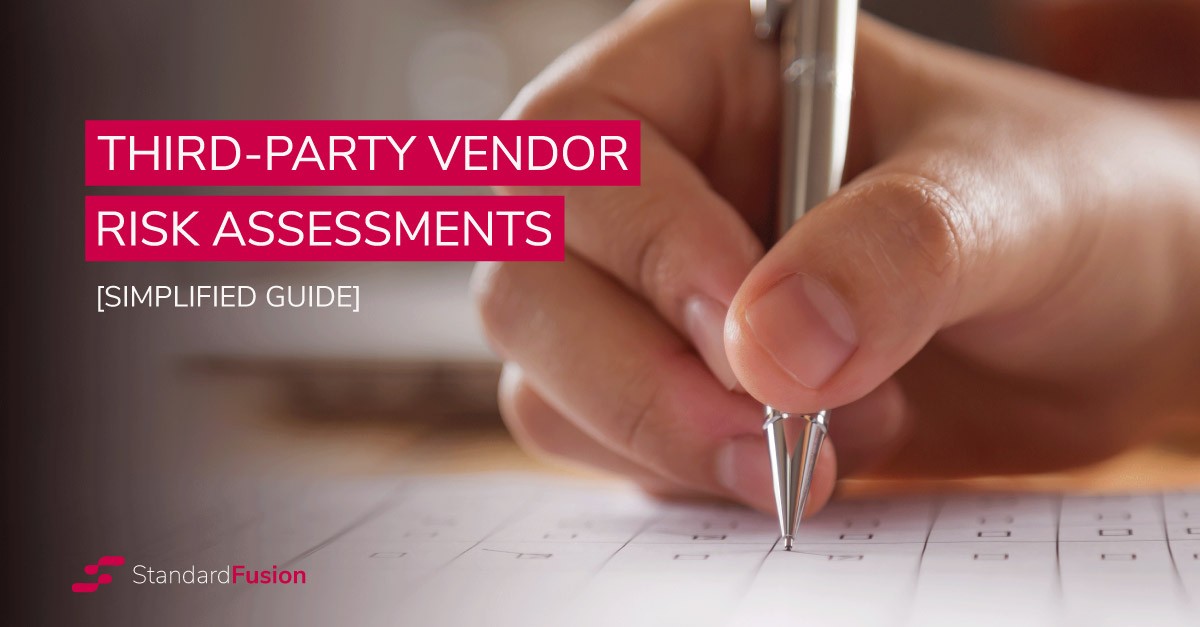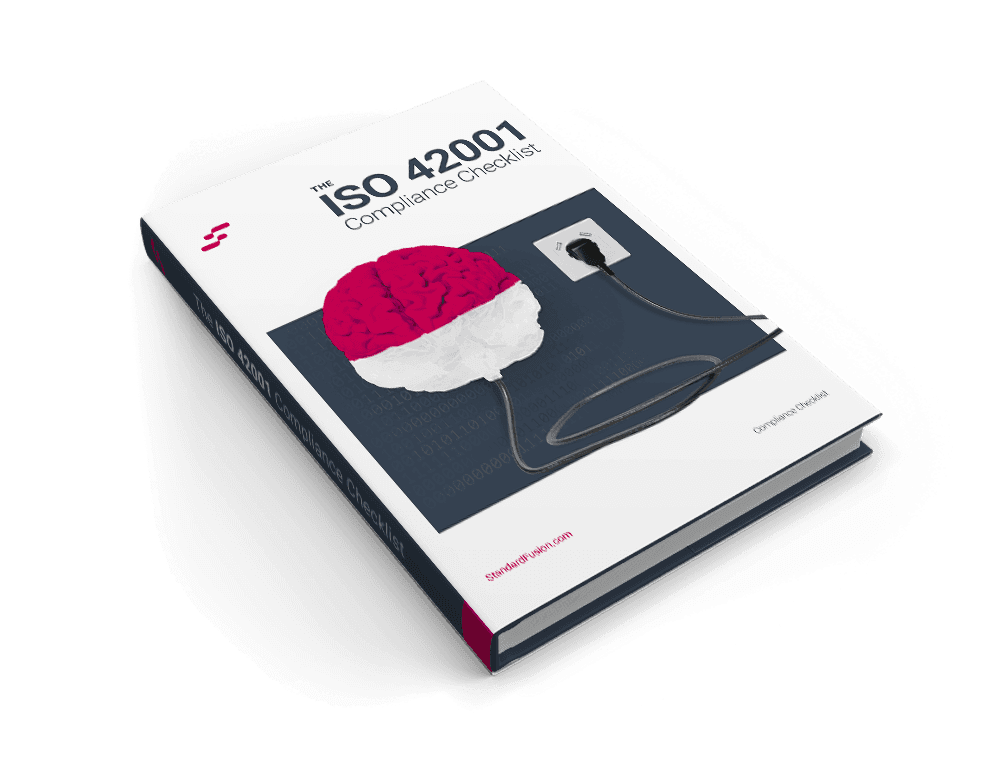Published on: Jun 24, 2020
Third-Party Vendor Risk Assessments [Simplified Guide]
Updated May 18th, 2022
This article will help you understand how vendor risk assessments can mitigate potential threats to your organization and ensure third-party suppliers meet your business needs and expectations.
What you will learn:
The importance of vendor risk assessments
Potential risks that may arise
Benefits of assessing vendor risks
How to assess vendor risks
Main tools to manage your third-party vendors
Let's dive into learning how vendor risk assessments can help you ensure third parties keep up with your business's quality and safety needs.
Why do you need vendor risk assessments?
The value of your business and its perceived worth depend on your business' data, how clean it is, how much you can trust it, and how you manage it and protect it.
Your data may include:
Customer information
Business transactions
Business interactions
Product information
Leads and opportunities
Employees' personal information
Business knowledge and processes
Current business risks
Whether you outsource your business's activities to save money or looking for the expertise you currently don't have in-house, you must ensure your vendors keep up with your quality expectations. By doing that, you don't introduce unexpected threats or risks to your organization.
Vendor risk assessments (VRA) will help you identify the potential risks your organization is exposed to when using third-party vendors' products or services. These assessments become more critical when your vendor has access to essential business functions, deals with sensitive customer data, or interacts directly with your customers.
The main goal of VRA is to identify vendors' weaknesses that could result in a data breach, data leak, cyber-attacks or any other risk for your organization.

What are the potential vendor risks?
Third-party suppliers and vendors can be anyone a business uses to support its operations. This includes manufacturers, suppliers, service providers and contractors of any kind.
While there are significant benefits from outsourcing tasks to vendors, businesses are ultimately responsible and must ensure compliance throughout the supply chain.
Typical areas of potential risk include:
Legal risk: Most businesses store or process sensitive information such as personally identifiable information, health information or government data. There are legally mandated compliance standards that govern the handling of this information, and third-party suppliers and vendors must meet these requirements.
Reputational risk: Third-party suppliers and vendors represent businesses, and their actions reflect the organization that hires them. When a third party fails to meet compliance standards or otherwise acts poorly, your business' reputation can also be damaged.
Operational risk: If a third party's operations are sub-par, your business' operations are most likely to be affected. Resources spent fixing supplier mistakes can negatively impact business performance.
Strategic risk: When your business's overall strategy and objectives don't align with your vendors', your business can face more friction when making decisions and achieving business goals.
Financial risk: Your vendors' actions could potentially damage your financial standing if their internal processes are not under control. For example, their poor supply chain management can directly affect your revenue and customer retention.
Privacy risk: Once you start a relationship with new third-party vendors, they will have access to critical information about your business and clients. If your vendors don't have the required security to protect personal data, this vital information could be easily accessed without authorization.
Cyber-security risk: Cyber-attacks on all businesses, particularly small to medium-sized ones, are becoming more frequent and targeted. If third-party vendors have a low security, your data might be lost or stolen. You must ensure your business partners have cyber-security controls and protections.

What are the benefits of assessing vendor risks?
Vendor risk assessments may seem intimidating and tedious at first, but remember that by understanding who your vendors are and how they work, you are taking care of your business and employees' safety. Plus, some tools (we will go over them later) can help you make this process much easier.
Not sure how vendor risk assessments can help? The following are some of the most important benefits you will get from VRA.
Reduce risks: When you get a good snapshot of the risks third-party vendors can introduce into your organization, you can ask for corrective actions or eliminate them from your potential partnership options. Remember that choosing the wrong vendors can significantly hurt your organization by raising the risks of data breaches, leaks, or other cyber-attacks.
Reduce costs and time: When you control the potential risks and threats that third-party vendors can introduce into your organization, you can make early, informed decisions and engage with the most qualified partners. If you don't have enough information about your vendors, it might cause future corrective actions that will need more time and money.
Defensibility: No company will ever be 100% secure, so it is crucial to be prepared for unexpected/unwanted situations. When a breach occurs, everyone will go after you and your business (regulators, lawyers, customers, etc.), even if a third-party vendor caused the breach. When you have vendor risk assessments in place, you show your due diligence and the steps to determine the vendor's risk levels and eliminate potential risks.
Improve the quality of your services: When you understand how third-party vendors work and the procedures and guidelines they have in place, you can understand their priorities and overall quality. Vendors with suitable systems and practices will be more likely to deliver quality outcomes, improving the quality of your products or services.
Ensure compliance: As outsourcing becomes more common and third-party breaches continue to rise, regulators are much more strict with organizations that are not adequately managing their third-party vendors. External vendors are an extension of your company's ecosystem, and both would be penalized and/or fined in case of a breach.
When you assess vendors, you can simplify your compliance initiatives and satisfy industry regulatory compliance requirements, helping your business when regulators come.Gives you visibility: If you work with multiple third-party vendors, you might have some challenges analyzing those relationships. An assessment system in place ensures that you have a complete look at every connection you have with your current partners, increasing reaction time against unexpected issues.

How to assess vendor risks
You need to perform detailed vendor risk assessments to mitigate potential threats to your company. This assessment also helps your reject potentially risky vendors before entering a damaging relationship.
Also, remember that risk assessments should be a continuous process with a consistent approach applied to each vendor, based on a well-documented risk management plan.
When assessing vendor risk, businesses should focus on the following areas for effective risk mitigation:
Assess business impact and regulatory risks: A vendor's impact determines if they are critical or non-critical to your business. Regulatory risk determines whether the vendor is low, moderate, or high. This is important because not all vendors have the same level of risk. Vendors that handle critical processes are a more significant threat than smaller contractors who only work with a single department.
Use a standardized approach: The risk assessment process should be repeatable and consistent in content and criteria. This allows vendors in the same category to be compared equally and ensures that each vendor considers important risk factors.
Assess suppliers at the product or service level: To understand every possible risk, product or service provided by vendors, each offering should be individually assessed, especially for critical impact / high-risk vendors.
Evaluate risk when selecting vendors: Vendors should be assessed during the selection phase to ensure you are choosing the best vendor for your organization.
Conduct due diligence for critical or high-risk vendors: Due diligence assesses a vendor's ethics and financial stability. This ensures the vendor has the strength and reliability to deliver the services your business requires.
Vendor risk assessment tools
There are many vendor risk assessment tools, and no single solution will be perfect for every organization. However, the most widely used and adaptable tools include the following:
Vendor Risk Assessment Templates: A vendor risk assessment template is a tool you can use to document the risk that exists within an area, the potential consequences of those risks, and the recommended controls to reduce risk to acceptable levels. General templates for managing vendor risk are readily available and can be adapted to specific requirements.
Risk Assessment Frameworks: Most organizations are subject to standards or regulations based on best-practice or legal requirements that can be used to guide vendor risk management. The National Institute of Standards and Technology (NIST) and the International Standards Organization (ISO) include vendor risk assessment frameworks.
Vendor Assessment Questionnaires: You can send vendors questionnaires to ask about their security practices and controls. These questionnaires are usually completed before engaging with a vendor and updated regularly to manage risk throughout the relationship. The best vendor questionnaire solutions are automated to allow delivery, completion, and responses to be managed efficiently and cost-effectively.
Governance, Risk and Compliance (GRC) Tools: GRC tools allow businesses to quickly implement a suite of processes to monitor critical areas and report results to identify risks during initial and ongoing assessments. Governance Risk and Compliance software will also help you manage vendor risk assessment tools such as industry or regulatory frameworks and vendor management questionnaires.
Governance, risk, and compliance tools like StandardFusion can produce vendor questionnaires in preloaded templates for a range of business functions and be customized to meet specific requirements. In addition, they include support for the Standardized Information Gathering Questionnaire (SIG/SIG-Lite) and the 2018 Vendor Security Alliance Questionnaire.







